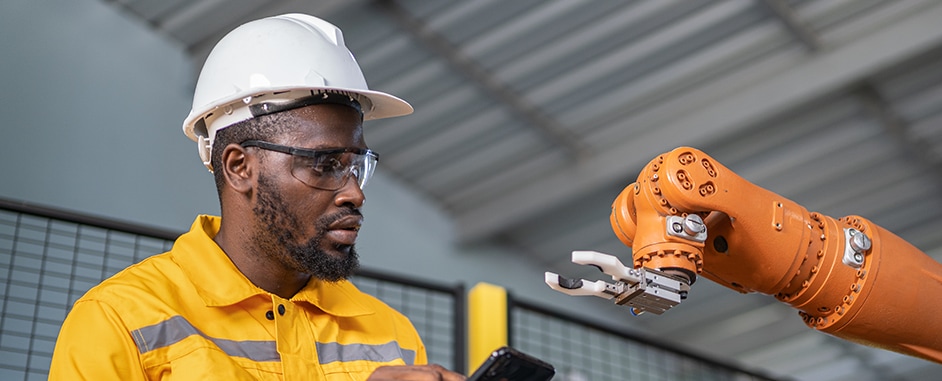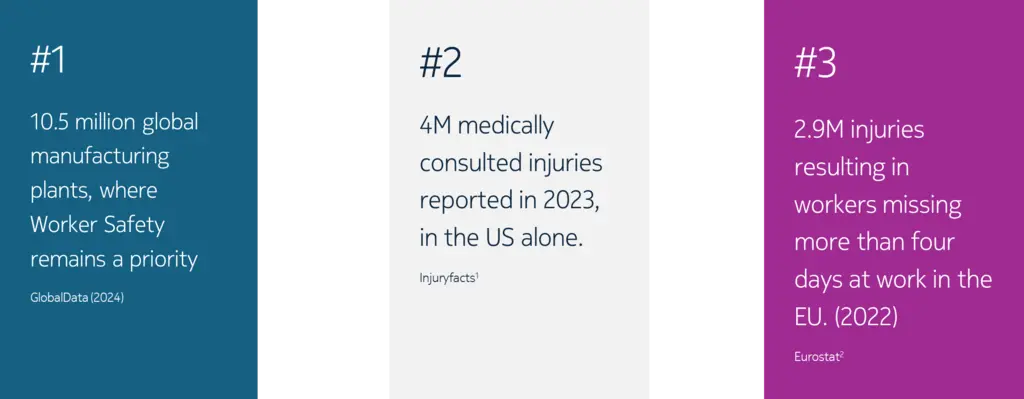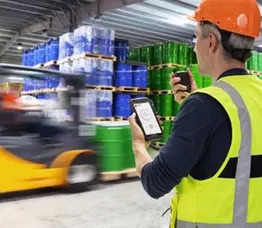Worker safety: The non-negotiable driving force of industrial automation

Mines, construction sites, factories and ports are just a few industrial sites that can be hazardous for workers. A slight lapse in attention, a single irresponsible act, poor judgment, or technical fault can cause accidents that result in injuries or fatalities.
There are more than 10 million sites of this kind across the globe, and at each, the primary goal is ensuring workers go home safely after their shifts end. In the US alone, however, more than 4M medically consulted injuries were reported in 2023 as well as more than 4500 preventable fatal work-related incidents. The EU saw similar numbers in 2022 with 2.9M injuries resulting in workers missing more than four days of work, and 3286 fatalities. While these numbers have marginally reduced, there’s still a long way to go to reach the ultimate goal of eliminating work-related fatalities.

Increasing worker safety is one of the main drivers for the digitalization of industrial segments
An ecosystem designed for industrial automation
At Nokia we are focused on connecting and digitalizing operational environments across industries. Now more than 850 customers can rely on the bandwidth, speed, reliability, responsiveness and pervasive coverage they need from private wireless connectivity. However, we go beyond connectivity at Nokia. We understand that the enterprise digitalization journey requires a unified approach to connectivity, data processing and application management – and that relies on industrial edge, private wireless, devices, and applications working together.
The industrial edge is vital to enabling real-time data processing on site and, combined with a private wireless network, it can support advanced technologies like AI and analytics to enhance worker safety as well as efficiency, productivity innovation and sustainability.
When we first introduced our own MX Industrial Edge (MXIE), we delivered a solution designed to manage on-site data processing and host all applications. This affords enterprises greater visibility across their assets and operations, allowing them to optimize their processes, eliminate wasted effort and resources, increase efficiency, connect workers to keep them safe, and much more.
As more industrial applications became available, we grew the Nokia MXIE ecosystem, to provide our customers with a greater choice of applications and application types, and allow them to achieve their goals in their way.
Camera-based positioning, for enhanced worker safety
As we continued to expand the MXIE ecosystem, we wanted to do even more to help enterprises protect their most important assets and keep workers safe. That’s why, earlier this year we introduced a new industrial tracking and positioning solution – primarily to help enterprises to identify the location of assets to reduce the time spent looking for them and to optimize their processes. There is, however, another application for Nokia Visual Position and Object Detection (VPOD) – to increase worker safety at industrial plants. VPOD does this using feeds from live video streams, positioning data about objects and workers and AI-based pose detection to calculate and determine the status of workers and assets.
Many digitalization use cases enabled by VPOD can have a massive impact on worker safety. For example, it can be used to detect when a forklift, truck, or other machine approaches an area or when a person enters a potentially dangerous area. If this occurs, the private wireless network can be used to alert workers through alarms, lights or loudspeakers. These two simple use cases can drastically reduce the chance of serious injuries.
Personal protective equipment (PPE) can also make a big difference in protecting the workforce. It’s no surprise that PPE compliance must be tracked and enforced in many industries. With Nokia VPOD we can use that track and alert capability to identify non-compliance, ensuring every worker is equipped with the right PPE to keep them safe, based on the tasks they need to perform and the area of the plant they are working in.
In cases where incidents and injuries aren’t preventable, a quick response can significantly impact the outcome. By detecting a fallen worker using the Nokia VPOD solution, operators can be alerted to any employees in need, pinpoint their location and more rapidly provide assistance.
Worker safety is not static, it’s a continuous path of evolution
Leveraging an integrated private wireless platform that incorporates industrial edge, devices, and applications working together enterprises are afforded numerous possibilities. But there is more to come and at Nokia, we continue to develop our solutions to provide a reliable and non-intrusive way to improve plant operation and worker safety.
In doing this, we will deliver new use cases for hazardous working environments that enterprises can use to achieve their worker safety goals.
Sources:
1https://injuryfacts.nsc.org/work/work-overview/work-safety-introduction/




